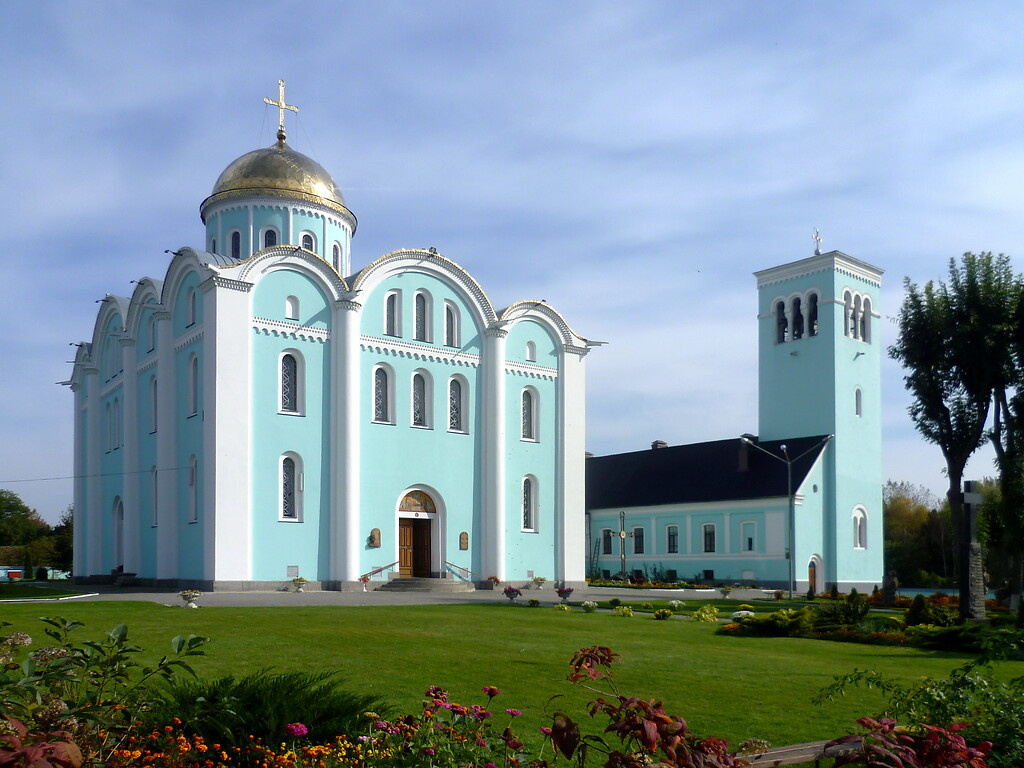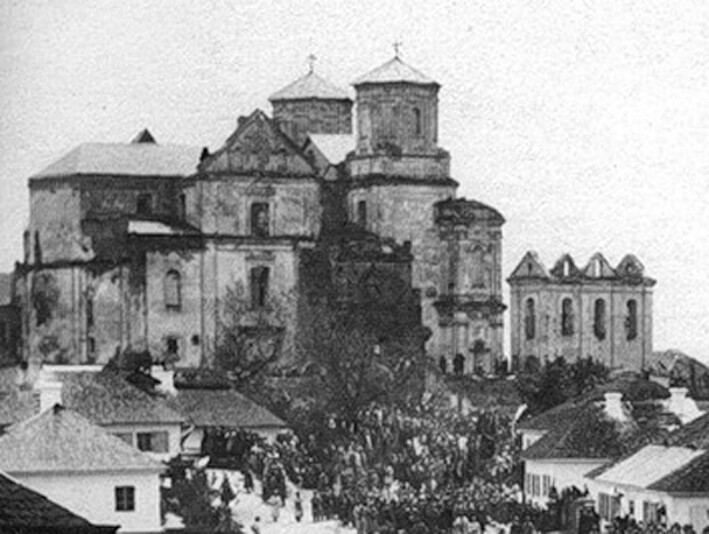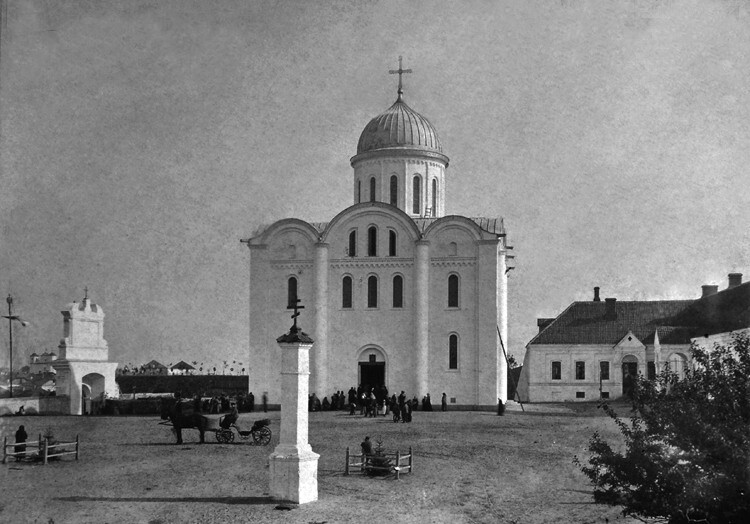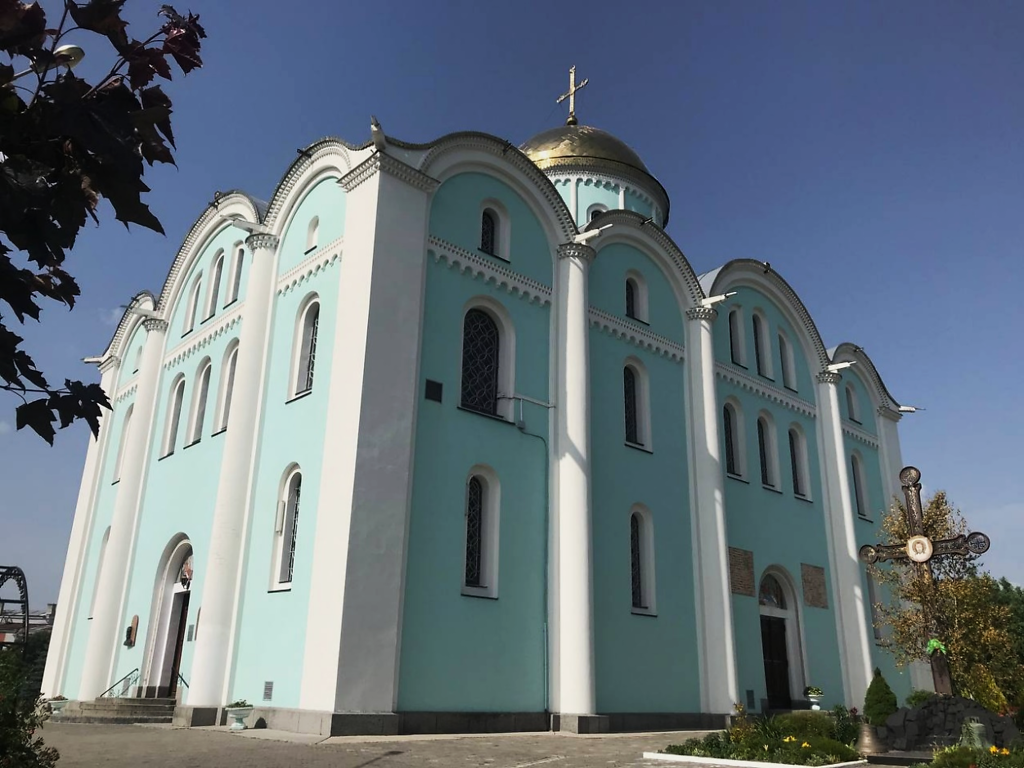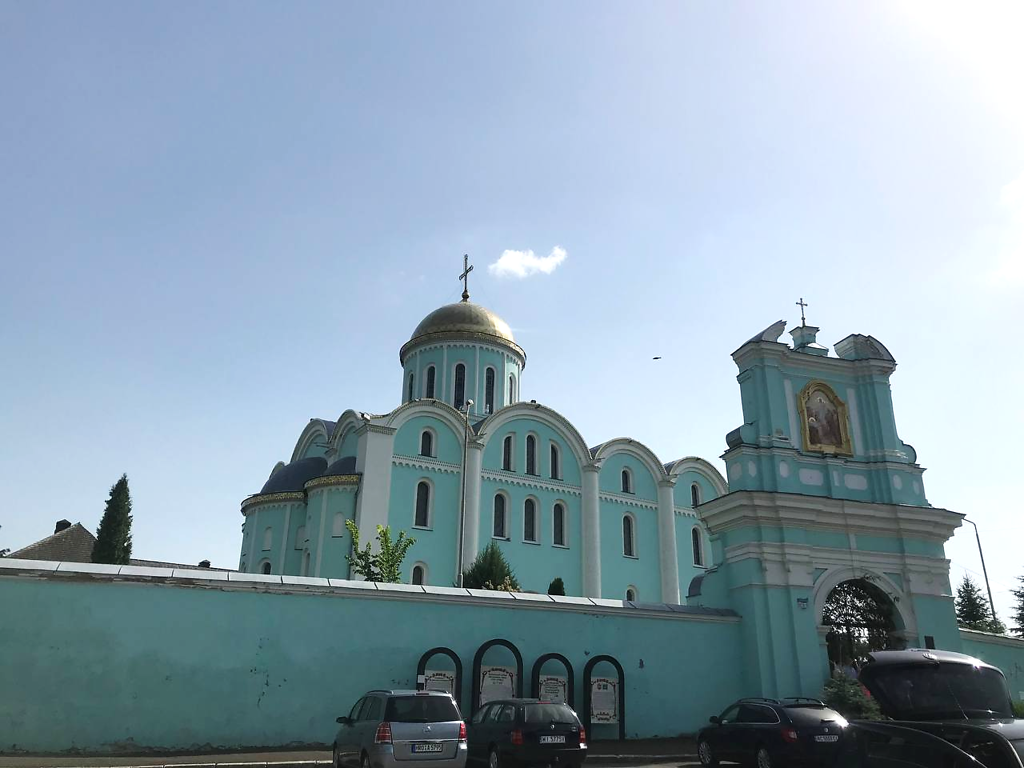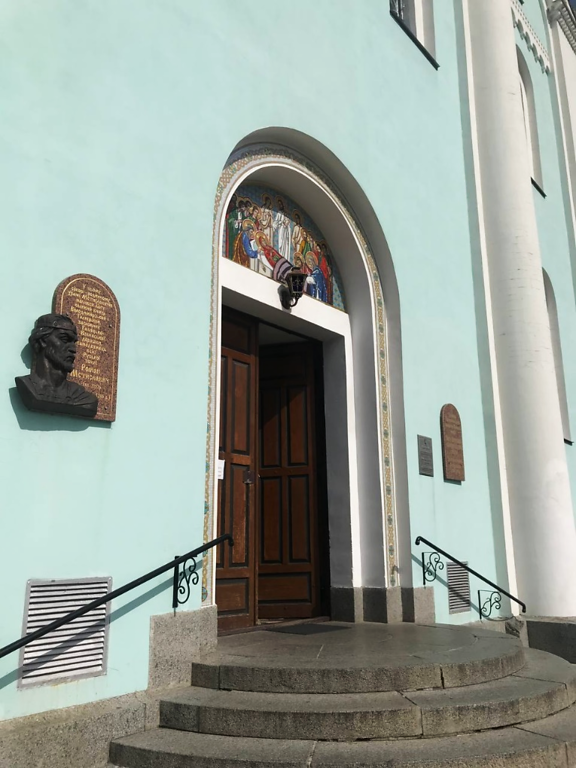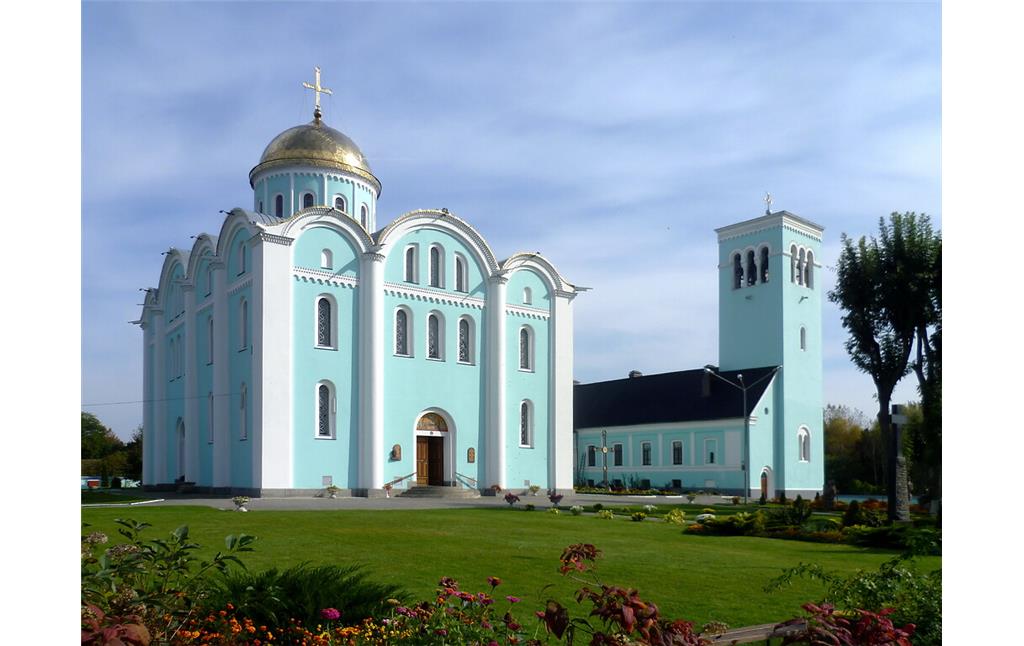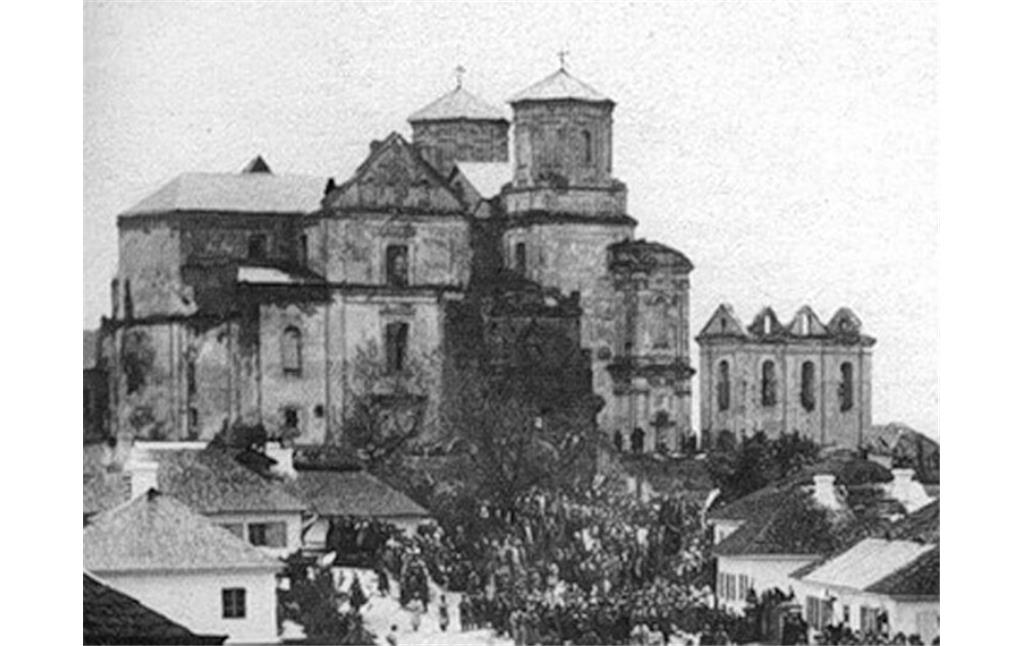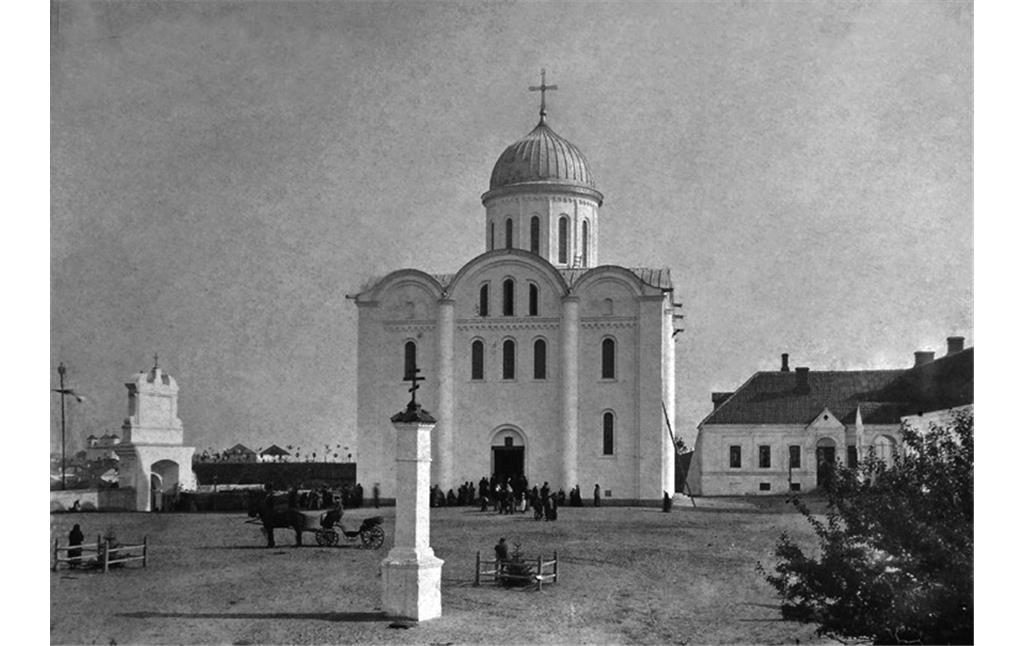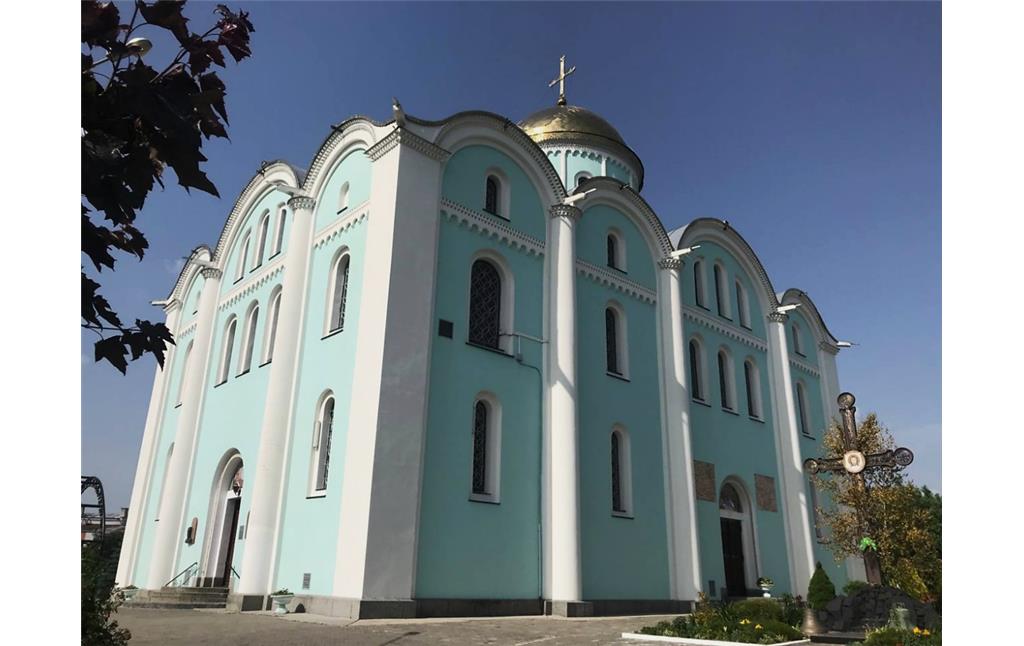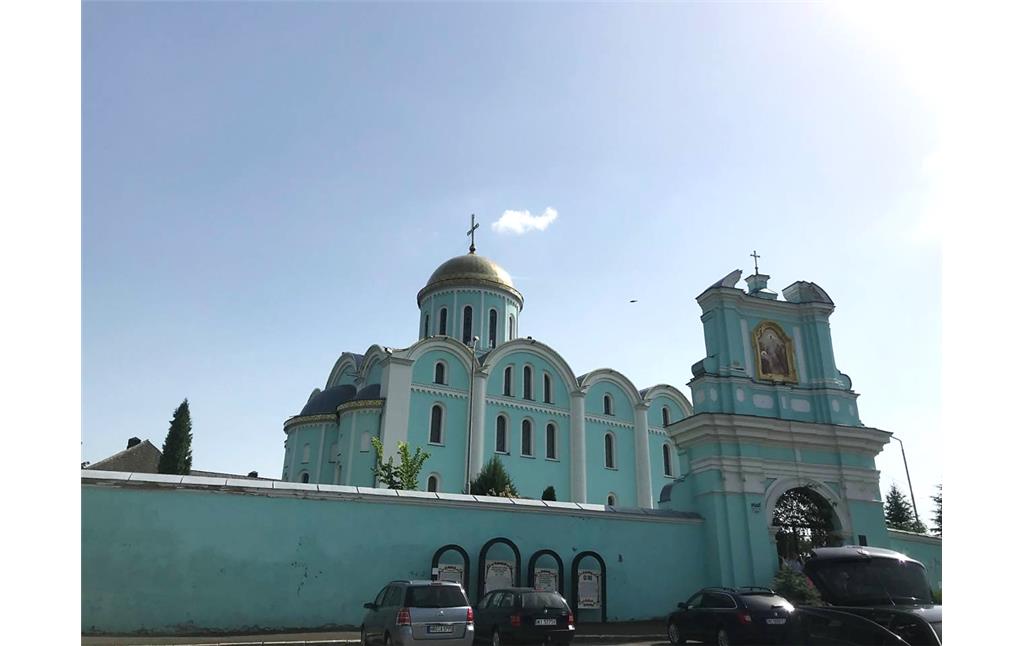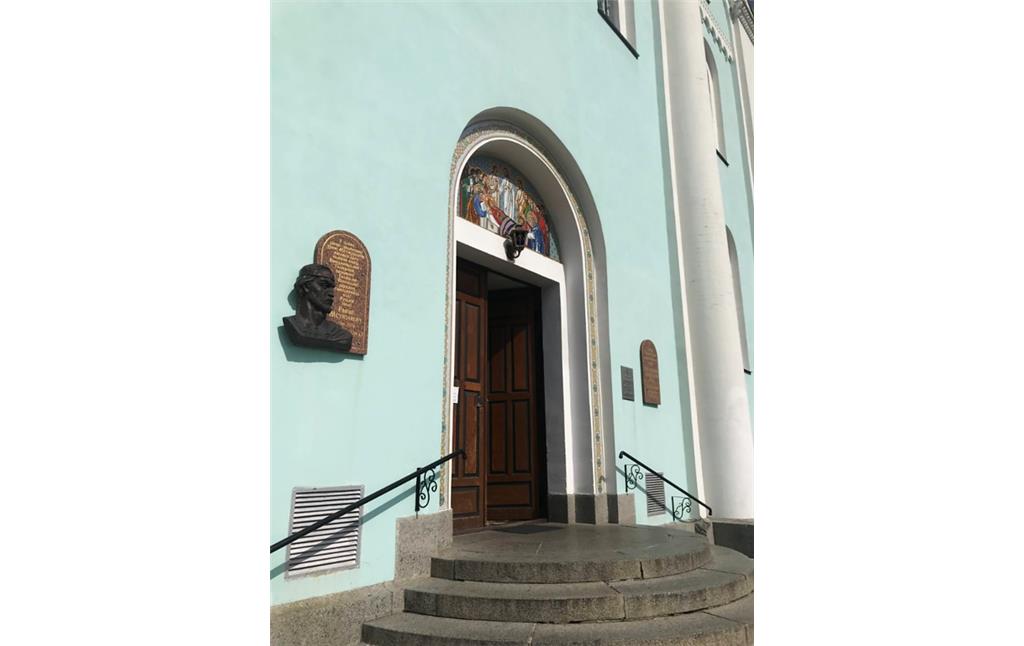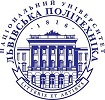
In the early 17th century, Bishop Ipatius Potius (1541-1613) lived in the cathedral. He was one of the initiators of the Brest Union (1596) and one of the founders of Greek Catholic Church. The cathedral was decorated by Italian masters. The complex of the cathedral also includes the entrance gate (the 17th century), the Bishop’s Palace (the 15th century) and the bell tower (the 15th century).
In the church graveyard there is a grave of Omelian Dvernytskyi (1834-1906), a nobleman, a judge and a historian. He used all his best to restore Mstyslav's Church in the late 19th century. He was buried in the church graveyard for such a great merit to the church and to citizens.
(Yulia Karpiuk, Lviv Polytechnic National University, 2021)
Die Mariä-Entschlafens-Kathedrale (... auch Uspenski-Kathedrale, Mariä-Himmelfahrt-Kathedrale, Mstislaw-Kathedrale) ist die Hauptkirche in Wolodymyr in der Ukraine. Sie wurde 1160 geweiht und ist die älteste erhaltene Kirche Wolhyniens. Die Mariä-Entschlafens-Kathedrale ist die Hauptkathedrale der Eparchie Wolodymyr-Wolynskyj und Kowel.
Geschichte
Die Kathedrale wurde von 1156 bis 1160 unter Fürst Mstislaw von Wolhynien errichtet. 1596 ging sie mit der Eparchie zur neuen Ukrainisch-Unierten Kirche. 1683 wurde sie bei einem Stadtbrand schwer beschädigt. Erst 1753 wurde sie im Barockstil wieder aufgebaut. Seit 1772 war sie Lagerraum und verfiel.
Von 1896 bis 1900 wurde sie wieder originalgetreu rekonstruiert. Seit 1996 ist sie Hauptkathedrale der Eparchie Wolodymyr-Wolynskyj und Kowel der Ukrainisch-Orthodoxen Kirche Moskauer Patriarchats.
In der Kathedrale befinden sich Begräbnisstätten von sechs wolhynischen Fürsten, zwei Bischöfen und anderen Personen.
(Text der deutschen Wikipedia, Stand 23.03.2022 unter der Lizenz „Creative Commons Attribution/Share Alike“)
Internet
de.wikipedia.org: Mariä-Entschlafens-Kathedrale (Wolodymyr-Wolynskyj) (abgerufen 23.03.2022)
